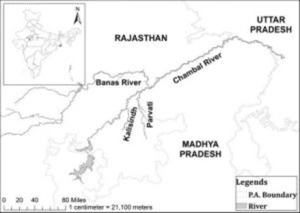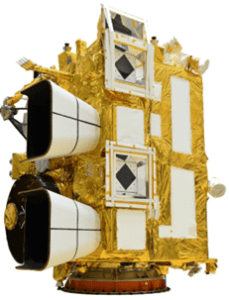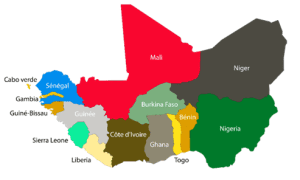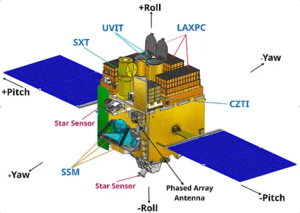ESCALATING CYCLONE INTENSITY IN NORTH INDIAN OCEAN BASIN: A CHENNAI RAINS ANALYSIS
TAG: GS 1: GEOGRAPHY
THE CONTEXT: A recent analysis by Chennai Rains, an independent weather blogging site, unveils a concerning trend in the North Indian Ocean basin, indicating a rise in the intensity and duration of cyclones over the past two decades.
EXPLANATION:
- The primary driver behind this phenomenon is identified as the rapidly-warming Indo Pacific Warm Pool (IPWP), a tropical ocean region situated in the western Pacific and eastern Indian Ocean.
The Indo Pacific Warm Pool (IPWP):
- The IPWP is experiencing accelerated warming, surpassing other ocean bodies globally.
- It is crucial for influencing weather patterns across Asia and the Indian subcontinent.
- This warming trend is notably impacting the North Indian Ocean basin, leading to increased sea surface temperatures.
Cyclonic Trends Since 2003:
- According to a weather blogger with Chennai Rains, the number of intense cyclonic storms, categorized as very severe or extremely severe, has witnessed a surge since 2003 in the North Indian Ocean, encompassing the Arabian Sea and Bay of Bengal.
- The warmer oceans contribute not only to stronger and slower-moving cyclones but also extend their duration as intense weather systems.
Implications for Monsoon Dynamics and Rainfall Patterns:
- The prolonged lifespan of cyclones poses potential risks to monsoon dynamics, potentially causing disruptions in rainfall patterns and leading to more extended dry periods.
- Cyclones such as Biparjoy and Kyarr, with extended durations of 10 days and 111 hours, respectively, highlight the evolving nature of these weather phenomena.
- The Arabian Sea has experienced a sixfold increase in the lifespan of strong cyclones over the past two decades.
Cyclonic Storm Statistics:
- Data from various meteorological agencies, including the Regional Specialised Meteorological Centre, IMD, the U.S. National Oceanic Atmospheric Administration, and the European Centre for Medium-range Weather Forecasts, reveal a notable uptick in severe cyclonic storms in both the Arabian Sea and Bay of Bengal.
- The numbers have risen to 16 in the past two decades (2004-2023) from 10 between 1984-2003. Similarly, extremely severe cyclonic storms increased to 17 between 2004-2023 compared to 11 in the preceding decades since 1984.
Global Influences and Warming Trends:
- The analysis underscores that 2023 was the warmest year since 1850, and the warming trend is likely to persist despite other global weather parameters like El Niño and La Niña.
- Carbon footprints and global warming are identified as major influencers, and the impact of warmer oceans is anticipated to extend for the next five decades.
Vulnerability of Southern Peninsular Region:
- With the IPWP continuously warming, the southern peninsular region, with its extensive coastline, remains vulnerable to more intense cyclones.
- The importance of creating hazard maps, flooding zones, and response plans is emphasized as crucial for disaster preparedness in the face of escalating cyclonic events.
Cyclone:
- A cyclone is a large-scale system of air that rotates around the center of a low-pressure area.
- It is usually accompanied by violent storms and bad weather.
- According to the National Disaster Management Authority (NDMA), a cyclone is characterized by inward spiralling winds that rotate anticlockwise in the Northern Hemisphere and clockwise in the Southern Hemisphere.
- The NDMA classifies cyclones broadly into two categories:
- extratropical cyclones
- tropical cyclones
Extratropical Cyclones
- Also known as mid-latitude cyclones, extratropical cyclones occur outside the tropics and have cold air at their core.
- They derive their energy from the release of potential energy when cold and warm air masses interact.
- These cyclones always have one or more fronts connected to them, which are the boundary between two kinds of air masses.
Tropical Cyclones
- Tropical cyclones are the most devastating storms on earth and develop in the regions between the Tropics of Capricorn and Cancer.
- They develop when thunderstorm activity starts building close to the center of circulation, and the strongest winds and rain are no longer in a band far from the center.
- Tropical cyclones have different names depending on their location and strength.
- For instance, they are known as hurricanes in the Caribbean Sea, the Gulf of Mexico, the North Atlantic Ocean, and the eastern and central North Pacific Ocean. In the western North Pacific, they are called typhoons.
Conclusion:
- The Chennai Rains analysis serves as a stark reminder of the evolving climate dynamics.
- It urges proactive measures in disaster preparedness and long-term planning to mitigate the impact of intensifying cyclones in the North Indian Ocean basin.









